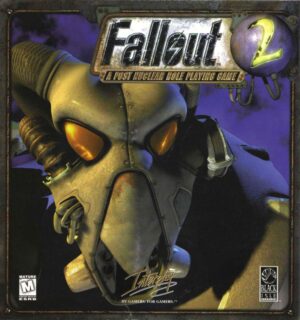Retro Replay Review
Gameplay
Frets on Fire builds its core experience around replicating the thrill of guitar-based rhythm games directly on your PC. Instead of physical guitar peripherals, the game ingeniously turns your keyboard into a fretboard by assigning the F1 through F5 keys as “frets,” with the Enter and Right-Shift keys acting as your strumming mechanism. For newcomers, there’s an immediate sense of discovery when you pick up the keyboard, flip it upside down, and mimic a real guitar stance—an approach that blends playfulness with intuitive design.
(HEY YOU!! We hope you enjoy! We try not to run ads. So basically, this is a very expensive hobby running this site. Please consider joining us for updates, forums, and more. Network w/ us to make some cash or friends while retro gaming, and you can win some free retro games for posting. Okay, carry on 👍)
The learning curve starts gently with the three bundled tracks, giving you room to acclimate to timing, chord transitions, and strum accuracy. As you progress, you’ll feel the rush of nailing fast sequences and sustaining long note chains. The game also supports official guitar controllers, so veteran Guitar Hero players can plug in their favorite peripheral and see instant improvements in comfort and precision. For those craving more content, Frets on Fire allows you to import songs from Guitar Hero and Guitar Hero II—doubling your setlist and unlocking fan-favorite anthems.
Customization is another pillar of the gameplay experience. You can craft or download custom tracks (commonly called “FoFiX” songs) to expand your library indefinitely. A built-in editor streamlines the charting process, enabling budding musicians or hobbyists to sync any MP3 with note highways. Whether you aim for perfect execution on classic rock hits or experiment with obscure indie tracks, the game’s flexible import and charting tools keep you locked into the groove.
Graphics
Although Frets on Fire predates many modern indie music titles, its visual presentation remains functional and clear. The central playfield is dominated by a horizontally scrolling note highway, complete with colored markers that align perfectly with the F1–F5 frets. The simplicity of this layout ensures that your eyes stay on the notes rather than being distracted by unnecessary flair.
Behind the note highway, you’ll often see subtle, low-polygon backgrounds or customizable skins created by the community. These visuals can range from animated concert stages to minimalist geometric patterns, allowing you to tailor the atmosphere to each song’s energy. While the base textures are modest, the game’s open architecture means that community-made shaders, lighting tweaks, and widescreen support can bring the aesthetics closer to modern standards.
Performance-wise, Frets on Fire is exceptionally lightweight. It runs smoothly on older hardware and even on Linux distributions, thanks to its open-source nature and GPL licensing. Framerate dips are virtually nonexistent, ensuring your timing remains rock-solid. For visually inclined players, frequent updates to custom themes and graphical add-ons keep the presentation fresh and engaging.
Story
As a rhythm-based simulator, Frets on Fire doesn’t deliver a narrative-driven campaign or character arcs. Instead, its “story” unfolds through personal progression and community interaction. Starting with the foundational three tracks, you soon develop muscle memory, timing proficiency, and the confidence to tackle more challenging custom songs that span every genre imaginable.
The game’s open-source ethos weaves into its narrative: a global community of developers, chart creators, and modders collaborates to expand the title’s capabilities. This shared journey gives the experience a grassroots vibe, where unofficial updates, fan-made stages, and plugin improvements become chapters in the ongoing saga of Frets on Fire. You’re not just playing—you’re part of a living project that evolves alongside you.
Moreover, the lack of a rigid storyline is a feature, not a flaw. Without a defined plot, you’re free to set your own goals: mastering a notoriously difficult solo, creating a custom track set for friends, or simply jamming along to your favorite tunes. In this way, Frets on Fire’s narrative is the story you write through each practice session and each new song you conquer.
Overall Experience
Frets on Fire emerges as an outstanding option for players seeking a flexible, no-cost alternative to mainstream guitar rhythm games. Its GPL licensing and cross-platform support mean you can enjoy the game on Windows, Mac, or Linux without worrying about purchase barriers. For enthusiasts who already own Guitar Hero titles, the ability to import official tracks extends the replay value dramatically.
The combination of keyboard play, optional guitar-controller support, and a rich repository of community-created content makes Frets on Fire both accessible and endlessly expandable. Whether you’re introducing friends to rhythm gaming or challenging yourself with custom expert-level tracks, the game scales to your skill set and equipment. Its lightweight engine ensures smooth performance, while modding tools keep the experience fresh.
In short, Frets on Fire stands out as a testament to open-source creativity in the gaming world. It captures the excitement of real-time guitar play, invites personal and communal storytelling, and thrives on continuous user-driven improvements. For players on a budget or those craving an open, mod-friendly platform, this title delivers hours of rock-solid entertainment without cost or compromise.
 Retro Replay Retro Replay gaming reviews, news, emulation, geek stuff and more!
Retro Replay Retro Replay gaming reviews, news, emulation, geek stuff and more!









Reviews
There are no reviews yet.